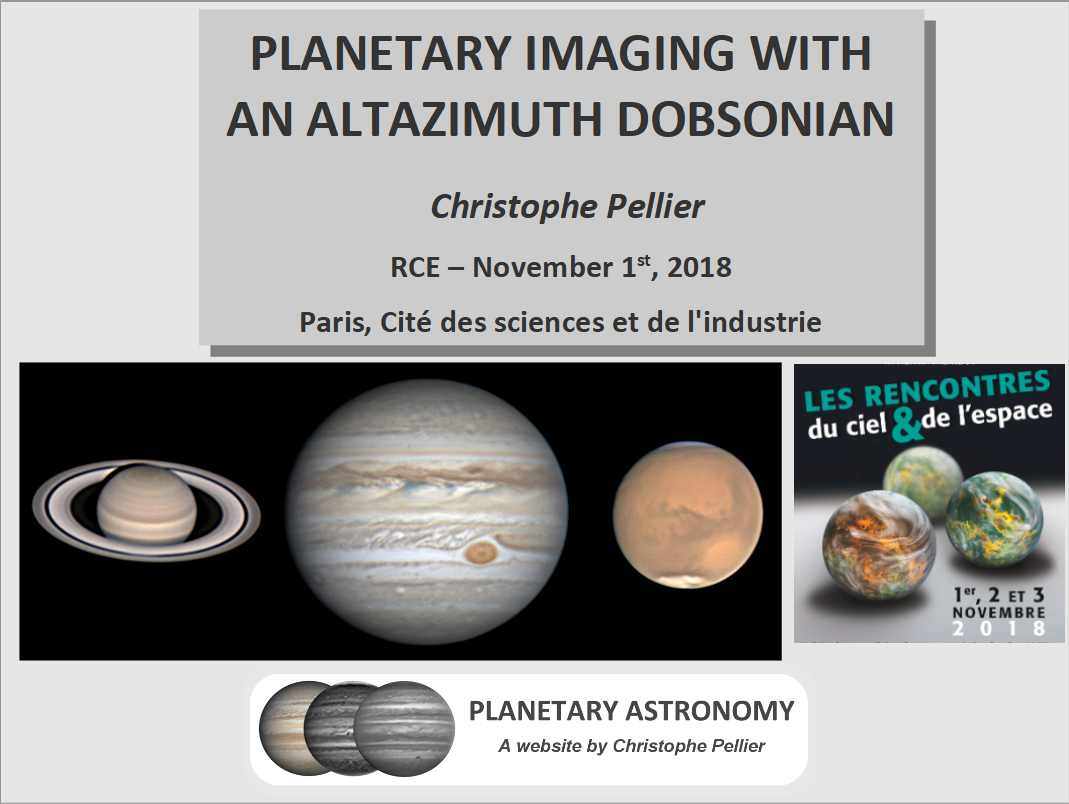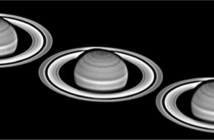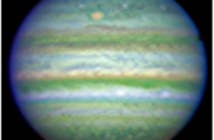No need of an equatorial plateform anymore!
We have long believed than field rotation prevented Dobsonian telescopes with an altazimuth tracking from taking images of planets (apart of very short videos). After one year of experience with a Skywatcher Flextube 305 I can assert that such instruments can make superb planetary telescopes without any limit, thanks to modern softwares.
This technic opens the way to much cheaper, much bigger, or even both, instruments.
Download my conference on the Rencontres du Ciel et de l’espace by clicking on the image below:
(Beware that this is an Open Office format: there will be some problems of display if you use Power Point)





6 Comments
Many thanks Stewart. It really, really works well!!
Great presentation regarding Planetary imaging with an altazimuth Dobsonian. I particularly found the information about “Compensation of Field rotation in altitude over azimut mounts” within WinJupos very interesting. I will try this when I next image at my friends house who has an Orion 16″ computerized scope.
Yes that sounds like good advices :)
Thanks for the detailed reply Christophe – apologies for the delay in my reply!
I am looking seriously now at the options of a 16″ guided Dobsonian vs a 14″ SCT. I did find some indication on the web of the following modifications when using a Dobsonian:
1. counterweights at the base of the tube if using imaging equipment;
2. fitting an extractor fan for the primary; and
3. fitting an electric motor to the Crayford to facilitate imaging.
Hi Mark,
Backfocus is rarely a problem once you put a barlow in. I had backfocus issues only without a barlow.
I don’t feel that the imaging train is causing problems to the motors ; but that’s a good question. The quality of the tracking is only average…
I did not try any more powerful barlow since it does not make sense following the sampling rules! A x5 would have taken the sampling far beyond the limit. Do not forget that if my main barlow lens is a 2,7x, this is only the visual value. On the field with the complete imaging train, the real value is ranging roughly from 3x to 6x (for this last one, I use 2×2 binning)
Thanks for the presentation Christophe. It is very helpful! I have a few questions (sorry!).
Did you have to modify the imaging train beyond the components you mentioned to achieve focus with the Dobsonian? I have never used a Netwonian, but I understand there are issues with back focus etc, compared with an SCT.
Also, did the autoguide motors function OK with all the imaging weight at the top? Did you need counterweights?
Did you try more powerful Barlows – I would have been tempted to try X5 with that set up!